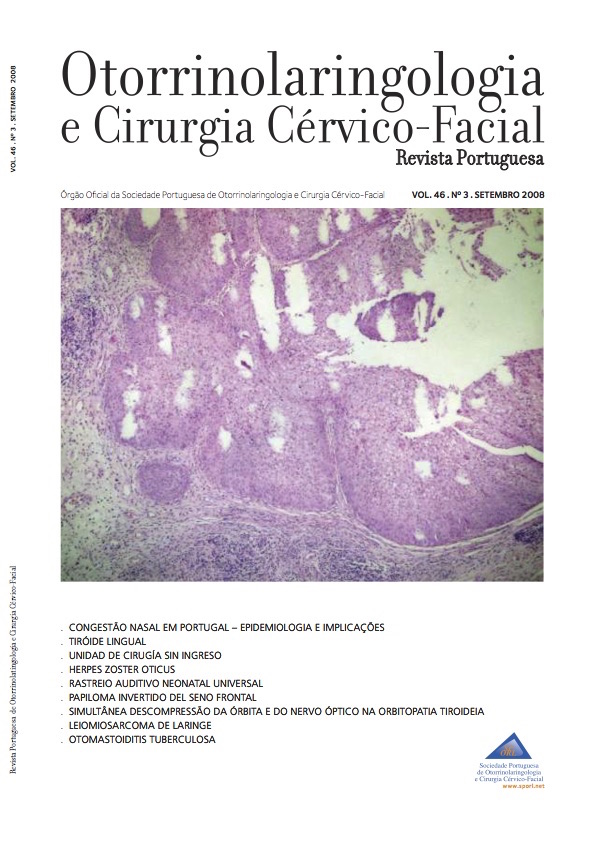Nasal congestion in Portugal – Epidemiology and Implications
DOI:
https://doi.org/10.34631/sporl.397Keywords:
obstruction, epidemiology, nasal, rhinitis, PortugalAbstract
Blocked nose is the most common symptom of inflammatory/infectious diseases of nasal mucosa, rhinitis being its major cause. Lack of epidemiological information on this healthcare problem and disease was noticed and determined the execution of this study, which assesses and characterizes the prevalence of nasal congestion in an adult population and the approaches related to aetiology and clinical practice. Methodology: During the first quarter of 2007 and based on a representative sample of the Portuguese population >= 15 years old, a survey was applied to identify seven symptoms that occurred on the previous 2 weeks and three symptoms that occurred on the previous week. In a sub-study, functional assessment was also performed evaluating maximum nasal inspiratory peak- flow rate. A “Global Nasal Congestion Index” was created, based on the seven questions of the survey.
Results: About 9,5% of the population has working, learning or daily activity difficulties related to nasal symptoms. Nearly 2/3 of the study population did not present nasal congestion (group A, 65,6%), 16,4% had very mild symptoms (group B), 13,3% refer nasal congestion mild to moderate and 4,6% had severe nasal congestion. Approximately 17.9% of the study population had clinical significative symptoms of nasal congestion. Higher indexes were found in women and subjects who referred working, learning or daily activity difficulties due to nasal symptoms. The analysis of the three symptoms that occurred on the previous week revealed that patients with higher indexes presented more significative symptoms of “blocked or stuffy nose on wake-up” (p <0.0001), “dry mouth or thirsty on wake-up” (p <0.0001) and snoring (p<0.0001). Nasal inspiratory peak-flow (n=473) was higher in males and lower in patients with a higher nasal congestion index. Conclusions: The prevalence of nasal congestion on the Portuguese population is significant and frequently leads to relevant symptoms on the adjacent anatomic structures, reducing working and academic performance. Based on a validated seven questions survey, it is possible to create Nasal Congestion Indexes which are useful to evaluate the degree of nasal obstruction, defining the need for therapeutical approach and creating awareness of the community, patients and doctors for the healthcare problem and its psychosocial dimension.






